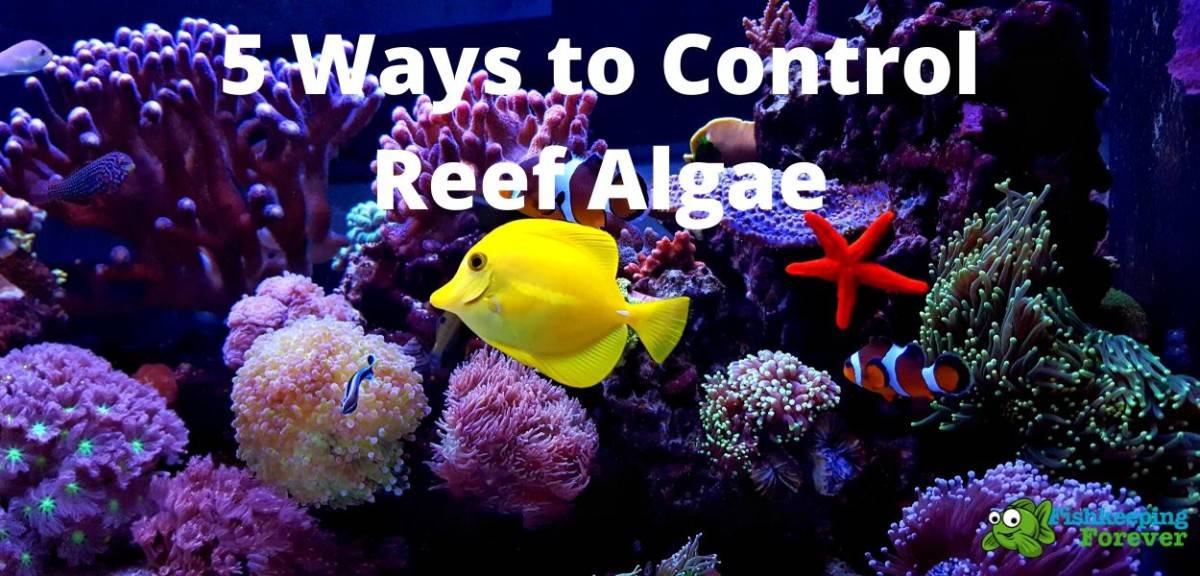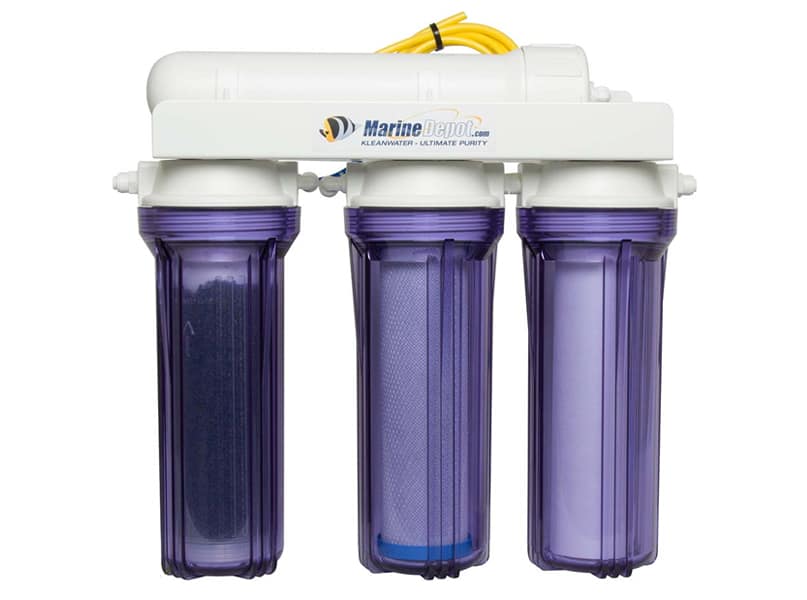Originally Published by: JEFF JOHNSTON DECEMBER 19TH, 2016
We all struggle with algae problems in our reef tanks. Algae are an essential part of the aquarium’s food chain and ecosystem. It’s impossible to eliminate algae from our reef tanks but we can take steps to keep algae under control. The idea is to maintain the right natural balance so algae cannot take over the aquarium.
Here are 5 Ways to control reef algae which will tip your aquarium’s ecological balance away from algae growth and toward a beautiful reef aquarium with less maintenance and algae scraping.
Table of Contents
Always use RO/DI water in a reef aquarium
Aquarists know water quality is important for maintaining a healthy reef aquarium. The water used to make seawater and for topping off the tank is just as important. Many tap water supplies naturally contain algae-promoting nutrients like phosphate and nitrate.
Sometimes water treatment plants even add phosphate-containing chemicals to the water to prevent pipe corrosion. Even well water can be contaminated with fertilizers and agricultural run-off.
Using this type of tap water in your aquarium encourages algae growth and may make it impossible to get algae growth under control! Filtering your tap water with a reverse osmosis deionized water system will strip out the nutrients and starve the algae.
The Marine Depot KleanWater Economy RO/DI System will produce up to 100 gallons per day of nutrient-free water. Using purified water is one of the most important steps in reducing algae problems in a reef aquarium!
Do not overfeed fish and corals
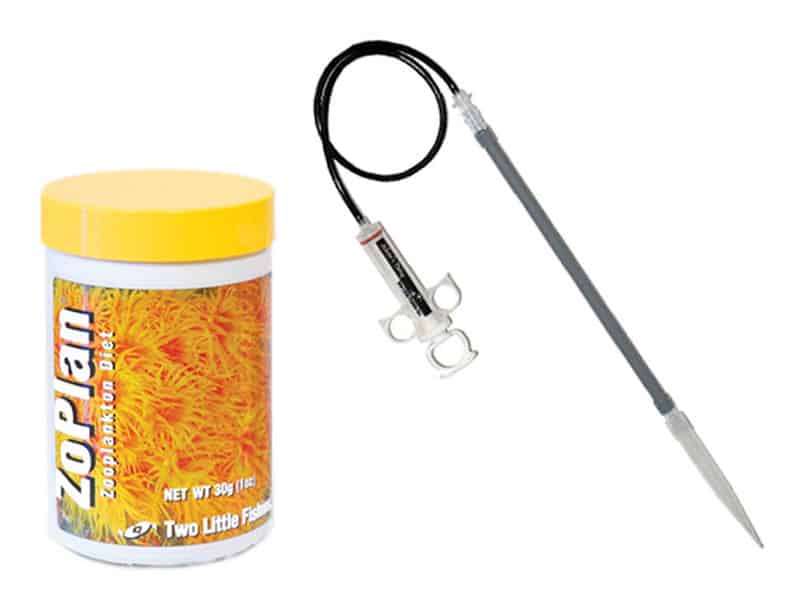
The more you feed fish and corals the more you’re feeding the algae. Fish and corals foods contain protein, fats and carbohydrates. Uneaten food breaks down and releases nutrients into the water.
Over feeding feeds the algae! The idea is to add just enough food for fish and coral health and growth. Feed small amounts several times a day. You may want to turn off the filter system when you feed.
This reduces the amount of food that gets captured in the filter and makes it easier for marine life to feed.
Target feeding your corals will also help put the food near the polyps and not into the filter or overflow. Instead of pouring coral food into the water, try using the V2O Aquarium Foods Wide Point Coral Feeder II.
| READ You’re Using The Wrong Test Kit: Why Aqua Medic’s Marine Lab Is Better Than ICP For Many Hobbyists |
Remove nutrients from the aquarium
Did you know that protein skimmers can help reduce algae problems? Protein skimmers physically remove nutrient-rich organic substances and particulate matter before they decompose and release nutrients into the aquarium water.
Phosphate-removing filter media is another way to limit nutrients in your tank. Granular ferric oxide (GFO) adsorbs phosphate from the aquarium water, starving the algae and causing it to die back.
Replace the GFO every 2-3 months to keep the phosphate level low. AquaMaxx Phosphate Out is one of many brands of phosphate-removing filter media we offer for algae control.
Maintain or upgrade aquarium lighting
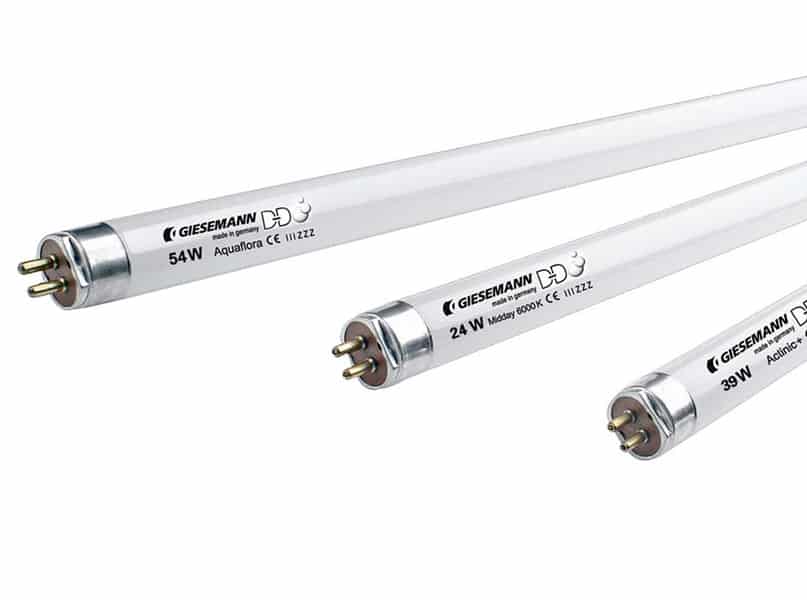
Old fluorescent light bulbs can cause algae problems. The quality and quantity of light gradually diminish, month after month, as the bulbs age. Nuisance algae, however, can thrive in poor quality, low light conditions.
Replace your fluorescent light bulbs at least once a year. You might even consider switching over to LED fixtures. LED aquarium lighting lasts for years and is more efficient and produces less heat than conventional aquarium lights.
Keep your aquarium clean
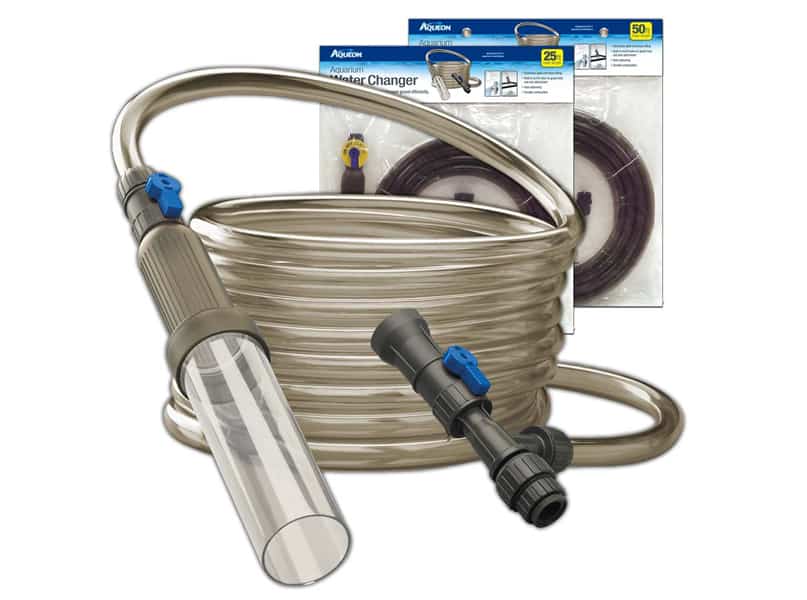
The last tip for controlling algae in your reef aquarium is simple and low tech. It removes nutrients, dissolved organics, suspended particles and sludge. It also adds pH buffers, calcium, magnesium and essential trace elements.
You guessed it: it’s a water change! Making partial water changes, especially with RO/DI filtered water, instantly removes nitrate, phosphate, organics and sludge and replenishes the aquarium with clear, clean saltwater.
Use the opportunity to siphon out debris from around the live rock, too. The Aqueon Siphon Vacuum Gravel Cleaner has a narrow siphon tube that is perfect for clearing in tight spaces, like behind live rock.
Conclusion: 5 Ways to control Algae in Reef Aquariums
If you’ve won the war on algae in your reef aquarium, what advice would you give to a new hobbyist? Which products or practices have you found to be the most effective in controlling nuisance algae? Let us know in the comments below!
- Green Mandarin Dragonet: Diet | Breeding | Size | Cost |Guide
- Firefish Goby: Diet | Size | Care | Lifespan | Cost
- Cleaner Wrasse: Diet | Size | Breeding | Sexing | Cost
- Best Cleanup Crew For a Reef Tank | Algae | Substrate | Scavengers
- Where Does the Mandarin Fish Live?

I have been working in the tropical fish industry for over 30 years now and I’m still learning. Everyday is a school day in this hobby. In my spare time I play golf very badly!


